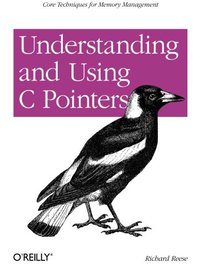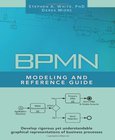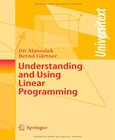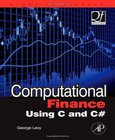Understanding and Using C Pointers

Book Details:
| Publisher: | O'Reilly Media |
| Series: | OReilly , Using |
| Author: | Reese M. Richard |
| Edition: | 1 |
| ISBN-10: | 1449344186 |
| ISBN-13: | 9781449344184 |
| Pages: | 226 |
| Published: | May 15 2013 |
| Posted: | Nov 19 2014 |
| Language: | English |
| Book format: | |
| Book size: | 6.15 MB |
Book Description:
Improve your programming through a solid understanding of C pointers and memory management. With this practical book, you#8217;ll learn how pointers provide the mechanism to dynamically manipulate memory, enhance support for data structures, and enable access to hardware. Author Richard Reese shows you how to use pointers with arrays, strings, structures, and functions, using memory models throughout the book. Difficult to master, pointers provide C with much flexibility and power#8212;yet few resources are dedicated to this data type. This comprehensive book has the information you need, whether you#8217;re a beginner or an experienced C or C++ programmer or developer.Get an introduction to pointers, including the declaration of different pointer types Learn about dynamic memory allocation, de-allocation, and alternative memory management techniques Use techniques for passing or returning data to and from functions Understand the fundamental aspects of arrays as they relate to pointers Explore the basics of strings and how pointers are used to support them Examine why pointers can be the source of security problems, such as buffer overflow Learn several pointer techniques, such as the use of opaque pointers, bounded pointers and, the restrict keyword
Download Link:
Related Books:
BPMN Modeling and Reference Guide
Understanding and Using BPMN
BPMN Modeling and Reference GuideUnderstanding and Using BPMN Develop rigorous yet understandable graphical representations of business processes Business Process Modeling Notation (BPMN) is a standard, graphical modeling representation for business processes. It provides an easy to use, flow-charting notation that is independent of the implementation environment. An underlying rigor supports the notation - facilitating the translation of business level models into executable models that BPM Suites and workflow engines can understand. Over recent years, BPMN has been widely adopted by Business Process Management (BPM) related products - both the Business Process Analysis and Modeling tool vendors and the BPM Suites. This book is for both business u...
Understanding and Using Linear Programming
The book is an introductory textbook mainly for students of computer science and mathematics. Our guiding phrase is "what every theoretical computer scientist should know about linear programming". A major focus is on applications of linear programming, both in practice and in theory. The book is concise, but at the same time, the main results are covered with complete proofs and in sufficient detail, ready for presentation in class. The book does not require more prerequisites than basic linear algebra, which is summarized in an appendix. One of its main goals is to help the reader to see linear programming "behind the scenes"....
Computational Finance
Using C and C#
In Computational Finance Using C and C# George Levy raises computational finance to the next level using the languages of both standard C and C#. The inclusion of both these languages enables readers to match their use of the book to their firm's internal software and code requirements. Levy also provides derivatives pricing information for: - equity derivates: vanilla options, quantos, generic equity basket options- interest rate derivatives: FRAs, swaps, quantos - foreign exchange derivatives: FX forwards, FX options- credit derivatives: credit default swaps, defaultable bonds, total return swaps. Computational Finance Using C and C# by George Levy is supported by extensive web resources. Available for purchase on the multi-tier website are e versi...
2007 - 2021 © eBooks-IT.org



